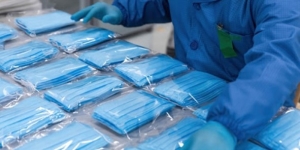
Low-quality medical products are products that are difficult to detect by their nature. They are often designed to look identical to the original product, and may not cause a harmful and clear reaction, but they often fail to properly cure the disease or illness for which they were made. There are numerous estimates of the scope and size of the market for low-quality medical products, but there is little evidence to support these estimates. In 2013, the organization launched a global monitoring and monitoring system with the aim of encouraging Member States to report incidents of low-quality medical products in a regular format with a special structure, and help to make a more accurate and authoritative assessment of the scope and scale of this issue and harm Caused by. To date, more than 920 medicinal products have been reported representing the major treatment categories and representing both generic and innovative drugs.
Contents of low-quality medical products
Fraudulent medicinal products may not contain any active ingredient or contain the wrong active ingredient or the wrong amount of the correct active ingredient. It has also been shown to contain cornstarch, potato starch or chalk. Some of the poor-quality medical products are of a toxic nature and contain lethal levels of faulty active ingredients or other toxic chemicals. Low-quality medical products are often produced in very poor conditions and produced by unqualified personnel, and contain unknown impurities and sometimes contaminated with germs.
Identify low-quality, forged, and adulterated medical products
Some fake medicinal products are almost identical to the original product, and their detection is very difficult. However, some of them can be identified through the following: Check the packaging to learn about production conditions or detect spelling or language errors. Checking the manufacture and expiry dates and verifying that any details on the outer packaging match the dates shown on the outer packaging. Verify that the form of the medicine is healthy, has not lost color, spoiled, or has had an unusual odor. Discuss with your pharmacist or doctor as soon as possible if you suspect it is not working properly, or if you have experienced a harmful reaction.
Unregulated websites
Unregulated websites offer medicines, especially those that hide their physical address or their landline phone number, usually a source of unlicensed, low-quality, and adulterated medical products. Consumers should be careful about the following points: Unsolicited email announcing medications Lack of reliability, lack of verification of the logo or certification Spelling mistakes and poor grammar in packaging Internet sites that do not display a physical address or a landline phone number Websites that offer to sell prescription medications only The products are fairly inexpensive
Online pharmacy checklist
Is this the exact prescribed medication? Is this the correct dose? Has the packaging been in good and clean conditions with a patient information leaflet in the language in which the product was announced? Does the product look the way it should and give the texture and smell it should? Does the product look the way it should and give the texture and smell it should? Does the customs declaration or postal mark declare that the product is a drug? Is the batch number and expiration date on the main inner packaging consistent with the batch number and expiration date on the secondary (outer) packaging? Have you noticed any unfamiliar activity on your credit card since your purchase?
Global impact
Fake medical products are manufactured in many countries and in all regions. Many countries and the media repeatedly report successful operations against manufacturers of substandard / counterfeit / counterfeit / counterfeit / counterfeit / counterfeit labels. Some reports refer to large-scale manufacturing processes, while others refer to small, hidden processes. With the availability of disk making machines, ovens, specialized equipment, components and packaging materials, it is quick and easy to install secret manufacturing facilities. No country has not been affected by this problem, from North America and Europe, through sub-Saharan Africa, Southeast Asia and Latin America. What was previously thought to be a problem for developing and low-income countries has become a problem that affects everyone. In light of the exponential increase in the Internet connection, those who were involved in making low-quality products were given access to a global market. This market is expanding to include consumer and business forums. The culture of self-diagnosis and self-prescription of drugs has led to the emergence of thousands of unregulated websites that provide, without censorship, access to low-quality medical products. However, low and middle-income countries and countries located in regions experiencing civil strife or unrest and severely weakened health systems or where there are no health systems at all, bear the greatest burden caused by low-quality medical products. .
Surveillance and monitoring system
In 2013 the inauguration of the global system for the monitoring and monitoring of low-quality medical products. It is an open system for all member states, and so far 113 countries and 18 major purchasing agencies have been trained to use the system. Its goal is to: Provide technical support in emergencies, link events between countries and regions, and issue WHO warnings on medicinal products; Collect a set of evidence to more accurately indicate the scope, magnitude, and harm of substandard / counterfeit / adulterated / adulterated / counterfeit / counterfeit medical products, and identify vulnerabilities, weaknesses, and prevailing trends. The system encourages trained contact centers in national regulatory agencies and international procurement agencies to inform the organization in a systematic and structured manner about incidents involving low-quality medical products. These communications allow for rapid response to emergencies and warnings, in most cases. It also provides in-depth analysis of medical products exposed to the most severe risks, vulnerabilities and weaknesses in health systems, damage to public health, the need for investment, capacity-building and strengthening organizational aspects. These are all matters that help to develop evidence-based policies.
 Ways to Make Money from Websites
Ways to Make Money from Websites
 Bitcoin is stable and will not be reduced by less than $ 6,000
Bitcoin is stable and will not be reduced by less than $ 6,000
 You know Ethrium the second most powerful virtual currency
You know Ethrium the second most powerful virtual currency
 Find out about the best hotels in Hawaii with lots of tourists
Find out about the best hotels in Hawaii with lots of tourists
 تفسير الاحلام وابن سيرين
تفسير الاحلام وابن سيرين
 Treatment with natural medicinal herbs
Treatment with natural medicinal herbs
 Al Rajhi US Shares Trading The advantages of trading US stocks with Al-Rajhi
Al Rajhi US Shares Trading The advantages of trading US stocks with Al-Rajhi
 To download videos and music from YouTube, here is a nice tool: Snappea
To download videos and music from YouTube, here is a nice tool: Snappea
 Get Ready for Ramadan and Shop Your Groceries Online
Get Ready for Ramadan and Shop Your Groceries Online
 A step-by-step guide to Affiliate Marketing with Arabclicks
A step-by-step guide to Affiliate Marketing with Arabclicks